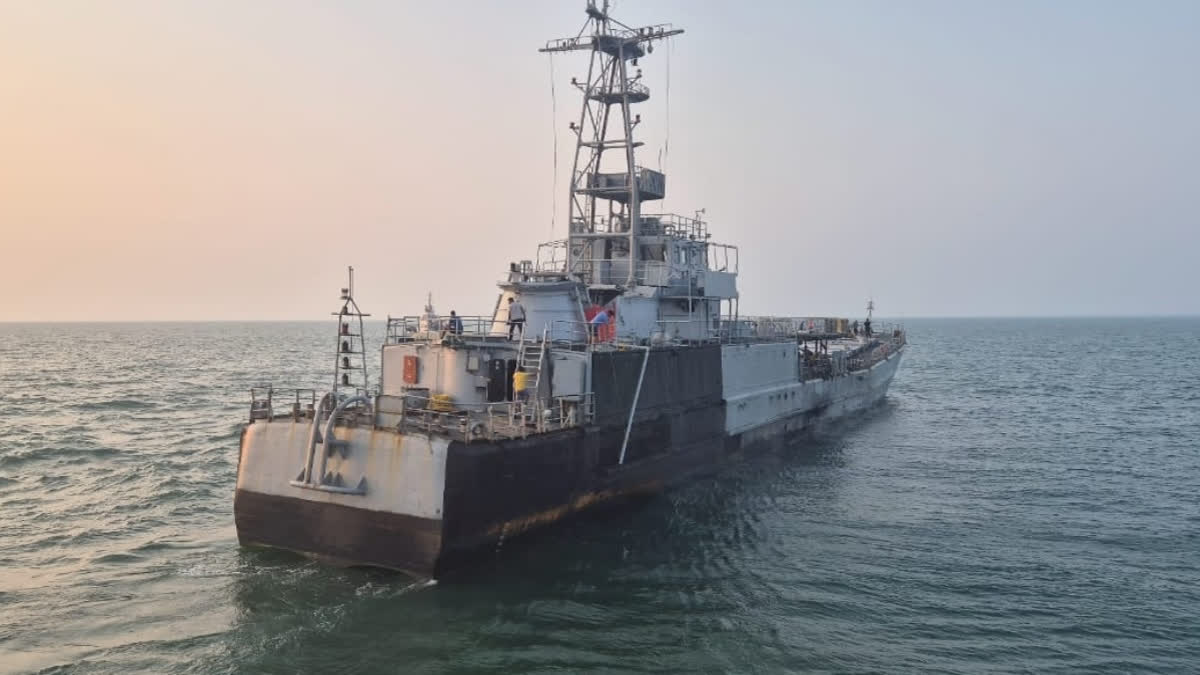The Indian Navy handed over its Ex INS Guldar, a Landing Ship Tank (Medium), to Maharashtra Tourism Development Corporation Limited (MTDC). The ship will be converted into an underwater museum and artificial reef. This is the first initiative of its kind in India to use a decommissioned ship of the Indian Navy.
The ship was handed over to MTDC at Karwar on an ‘as is where is’ basis. The MTDC has taken the ship under their charge to convert her into an underwater museum and artificial reef. The conversion will be undertaken by MTDC and will involve complete cleaning of the ship to remove any potential pollutants and hazardous materials, ensuring environmental clearances as per guidelines for marine conservation, obtaining various NOCs, and scuttling the ship at Sindhudurg, ensuring all safety precautions.
About Ex INS Guldar
Ex INS Guldar (A Polnocny Class Landing Ship) was built at Gdynia Shipyard, Poland and was commissioned into the Indian Navy on December 30, 1985. The ship was part of the Eastern Naval Command from 1985 to 1995 before being repositioned at Andaman and Nicobar Command, where she served till her decommissioning on January, 12, 2024. The ship rendered 39 years of yeomen service to the nation, during which she sailed for over 3,900 days and successfully conducted over 490 beaching operations to land Army troops ashore. The ship participated in various operations beyond her primary landing ship role, including Op Aman, Op Azad, Op Pawan and Op Tasha.
The project to convert the ship into an underwater museum and artificial reef is a significant step toward marine conservation, creating livelihood opportunities for coastal communities and elevating India’s stature in underwater tourism. Moreover, beyond the environmental benefits, scuttling decommissioned ships as artificial reefs also preserves the history of the vessels for centuries to come. Each ship carries the stories of its service and the brave sailors who served on them. By transforming a ship into an underwater museum and artificial reef, their historical legacy is immortalised, allowing future generations to learn about and appreciate its significance in India's naval heritage.
From an environmental perspective, it is recognised that sunken wrecks can play a crucial role in enhancing the local ecosystem. These underwater structures provide shelter for a diverse range of organisms, rapidly establishing thriving marine ecosystems that can be preserved for extended periods.
This initiative will also provide the Indian Navy with opportunities for diving training at the scuttled ship site, further enhancing collaboration between the Indian Navy and the MTDC.
Other marine museums in India
Till date, Indian Navy has its two vessels turned into museums. INS Kursura, the underwater behemoth of Indian Navy, is located on the golden sands of RK Beach in Vishakhapatnam from which the now prestigious, 'Submarine Museum' was emanated. This project, was taken up by the Eastern Naval Command as a joint venture with the National Ship Design and Research Center. It is a perfect place for children as well as adults to learn about Submarines as how difficult the life of personnel who are on duty in submarines.
Earlier, Indian Navy's INS Vikrant was also established a museum in Mumbai after it was decommissioned on January, 31, 1997. The British-built aircraft carrier was in in service from 1961 to 1997 and was operated as a museum from 2002 to 2012 and was scraped in 2014-2015. The aircraft carrier was recommissioned into Indian Navy on September 2, 2022, marking it, the first indigenously built aircraft carrier built by Cochin Shipyard Limited.
INS Cuddalore, a decommissioned minesweeper has also been turned into an underwater museum in collaboration with the National Institute of Oceanography and PondyCan (NGO). The museum is 26 meters deep inside the water. Originally commissioned to serve the Indian Navy at the Eastern Naval Command in Vishakhapatman, INS Cuddalore is 60 meters long and 12 meters wide. The minesweeper was converted into an underwater museum in 2018.
Read More:



